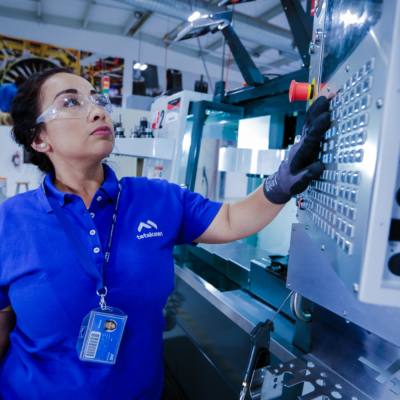Freedom Cities Blueprint is a bold idea that proposes building entirely new communities in America where government rules are minimal, taxes are low, and private innovation takes the lead. These new cities aim to be places of opportunity, freedom, and economic growth.
Instead of fixing broken systems in existing cities, the concept suggests starting from scratch. Supporters believe this fresh start allows communities to be designed for the future, built around individual freedom, digital governance, and streamlined regulations.
This article explores what Freedom Cities are, why the blueprint matters, the potential benefits and concerns, and whether this idea could shape the future of American communities.
What Is the Freedom Cities Blueprint?
Freedom Cities are new communities built with the goal of maximizing freedom through deregulation and innovation. These cities would reduce or remove many traditional government controls. Examples include relaxed zoning laws, simplified business regulations, and faster permitting.
The cities would be developed from the ground up, often on underused land. Private companies might build and manage the infrastructure. Local governments would have limited roles, often focused on basic services while embracing technology to improve efficiency.
The idea is not entirely new. Similar experiments have taken place in other parts of the world, like charter cities and special economic zones. But the Freedom Cities Blueprint takes this further by focusing on American values like liberty, self-reliance, and economic independence.

Why the Idea Is Gaining Attention
Several factors explain the growing interest in Freedom Cities:
- Many people are frustrated with high taxes, housing shortages, and government red tape in traditional cities.
- Entrepreneurs want spaces where they can launch new businesses quickly, without long waits or complicated regulations.
- Technology makes it easier than ever to build smart cities with digital services, online governance, and efficient systems.
- There’s a strong cultural push in some parts of the country toward self-governance and reduced federal control.
Supporters believe these new cities could serve as real-world experiments for alternative ways of living and working.
Benefits of Freedom Cities
Economic Growth
With fewer regulations, businesses can get started faster and grow more easily. Lower taxes and easier licensing may attract startups, remote workers, and investors.
Efficient Governance
Governance would be streamlined. Instead of layers of bureaucracy, services might be delivered digitally. Residents could apply for permits, pay taxes, or vote using mobile apps.
Innovation Hubs
With fewer limits, people may feel more free to try new ideas in housing, education, healthcare, and public services. This spirit of experimentation could lead to breakthroughs that spread to other places.
More Personal Freedom
Residents would have greater control over their lives, homes, and businesses. For example, building a home might not require dozens of permits. Parents could have more options for education, and small businesses wouldn’t face the same regulatory burden seen in big cities.
Concerns and Risks
Despite its promises, the Freedom Cities Blueprint faces several challenges.
Social Inequality
Without proper safeguards, these cities could become playgrounds for the wealthy. There’s a risk that lower-income residents would be left without access to basic services like housing, education, or healthcare.
Environmental Impact
Lack of regulation could lead to overbuilding, pollution, or the destruction of natural habitats. Smart planning would be needed to ensure sustainability.
Legal and Political Issues
Creating a new city in the U.S. is complex. It requires approval from state governments, and in some cases, federal agencies. Local communities might also resist large new developments near their towns.
Infrastructure Costs
Building from scratch means huge upfront costs for roads, utilities, public transportation, and more. Relying too heavily on private investment could lead to profit-driven decisions that overlook the public interest.
Accountability
If the government is too limited, who ensures leaders act fairly? Systems would need to be in place to prevent corruption, protect rights, and resolve disputes.
Real-World Examples
While no city in the U.S. fully matches the Freedom Cities model, several examples offer insight:
- Charter cities in countries like Honduras have tested special governance models and light regulation.
- Free economic zones in places like the UAE and China offer tax breaks and simplified rules to attract investment.
- Estonia’s digital government has shown how technology can simplify citizen services.
These examples show what’s possible, though they also reveal challenges in balancing freedom with fairness.
How a Freedom City Might Work
Imagine a city called Liberty Haven. It’s located in a rural area where land is inexpensive. A private developer partners with a state government to build the city, based on a special charter that limits regulations and allows private companies to run many services.
In Liberty Haven:
- Residents pay a flat local tax rate
- Permits for housing and business are issued in days, not months
- Education options include charter schools, online academies, and home-schooling co-ops
- Public transport is run by private companies but monitored through digital performance dashboards
- Local leaders are elected by residents, but many city services are automated or outsourced
This type of city might attract tech workers, startups, families seeking affordable living, and those who value personal freedom.

Can Freedom Cities Succeed?
The success of Freedom Cities depends on several key factors.
Political Support
Local and state governments must be willing to approve such cities and allow flexible governance. This may be easier in states already supportive of small government principles.
Balanced Planning
The blueprint must include basic protections for all residents—affordable housing, clean water, reliable power, and healthcare access. Without this, the cities may grow unequally and face public backlash.
Clear Rules
Even in a deregulated space, clear rules are essential. Property rights, safety standards, and contract enforcement should be defined and respected.
Sustainable Growth
As the city grows, it must balance freedom with livability. Too much growth without planning could lead to congestion, pollution, or loss of community values.
Conclusion
The Freedom Cities Blueprint presents a new way of thinking about American cities. It offers a vision of places where innovation, freedom, and economic opportunity come together in a carefully designed environment.
While the idea is exciting, it must be handled with care. Freedom without fairness can lead to inequality. Deregulation without planning can cause chaos. But with smart leadership, balanced policies, and community input, Freedom Cities could become powerful examples of what’s possible when people are trusted to build their own futures.
Whether they become real or remain an ambitious dream, Freedom Cities challenge us to think differently about how we live, work, and govern our communities
Do Follow USA Glory On Instagram
Read Next – DAO Organization Subscription Personalization Revolution






